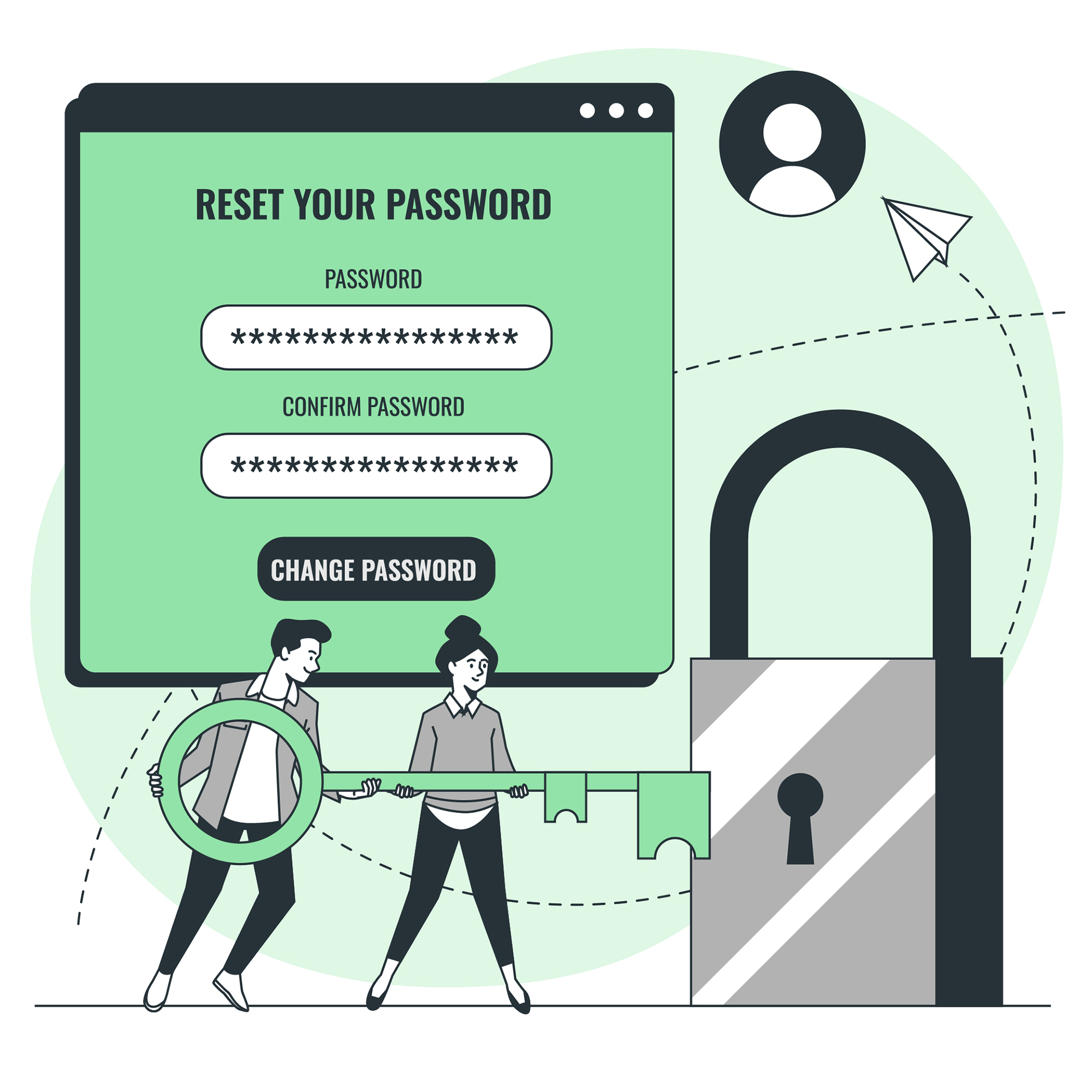Understanding 2FA: The Basics
Two-Factor Authentication (2FA) is a security measure designed to protect online accounts from unauthorized access. It operates on the principle of adding an extra layer of verification beyond just a password. Think of it like having a key (password) and a fingerprint (second factor). Without both, you’re locked out.
Why 2FA Matters
Imagine your digital life as a treasure chest. Your password is the lock, and 2FA adds a second lock, making it much harder for thieves to steal your valuables. According to a report by Google, implementing 2FA reduces the risk of account compromise by 99.7% [Source Needed].
How Does 2FA Work?
Let’s dive deeper into how 2FA enhances security:
- Something You Know: This is your password, something only you should know.
- Something You Have: This could be a physical token, a mobile device, or even a smart card.
- Something You Are: Biometric factors like fingerprints or facial recognition.
Practical Example: Setting Up 2FA
Setting up 2FA for your email account is straightforward. Here’s a quick guide:
- Log into your email account.
- Look for the security settings or account options.
- Find the option for enabling 2FA.
- Choose your preferred method (token, app, biometrics).
- Follow the prompts to complete the setup.
Visual Aid: The 2FA Process

This diagram illustrates the steps involved in setting up and using 2FA, highlighting the importance of each stage in securing your account.
Common Questions About 2FA
Is 2FA Complicated to Set Up?
Not at all Most services offer guided setups that are user-friendly and take just a few minutes.
Can I Use Multiple Methods for 2FA?
Yes, many platforms allow you to choose between various methods, including SMS, apps, and biometrics, giving you flexibility.
How Secure Is My Account With 2FA?
Very secure. Even if someone knows your password, they still need the second factor to access your account.
Conclusion: Embrace 2FA for Safer Digital Experiences
By adopting 2FA, you’re significantly reducing the risk of your digital assets being compromised. It’s a small step that makes a big difference in protecting your online identity and privacy. So, why wait? Start securing your accounts today with 2FA.
Understanding Two-Factor Authentication (2FA)
In today’s digital landscape, cybersecurity is no longer a luxury—it’s a necessity. With cyber threats becoming increasingly sophisticated, it’s crucial to employ robust defense mechanisms. One such mechanism that has gained significant attention is Two-Factor Authentication (2FA). Often hailed as a silver bullet against unauthorized access, 2FA adds an extra layer of security beyond just usernames and passwords. But how does it work, and what makes it effective?
How Does 2FA Work?
Imagine you have a key (your password) to unlock a door (access to your account). Now, let’s say you also need a fingerprint scanner (the second factor) to prove it’s really you trying to get in. This is essentially what 2FA does: it requires two forms of identification before granting access. The first factor is something you know—like a password or PIN—and the second factor could be something you have, like a mobile device to receive a verification code, or something you are, like a biometric verification through fingerprints or facial recognition.
Why Is 2FA Effective?
The primary reason 2FA is considered effective is due to its layered approach. By requiring two separate forms of authentication, it significantly reduces the likelihood of unauthorized access. Even if one form of authentication is compromised, the attacker would still need to bypass the second factor to gain access. This makes 2FA a formidable barrier against common hacking techniques.
Common Myths About 2FA
Despite its benefits, there are several misconceptions about 2FA. For instance, many believe that because it involves two steps, it’s inherently more secure than single-factor authentication (SFA). While 2FA is indeed more secure, it’s not infallible. It’s possible for attackers to exploit vulnerabilities in the second factor, especially if it’s something you have, like a mobile device. Therefore, it’s essential to use strong, unique passwords as the first line of defense.
Implementing 2FA: A Practical Example
Let’s consider a real-world example. Suppose you’re signing into your online banking account. After entering your username and password (first factor), you’ll receive a code via SMS to your registered mobile number (second factor). This code must be entered within a certain timeframe to verify your identity. If someone else tries to access your account, even with your password, they won’t have access to your phone to receive the code, effectively preventing unauthorized access.
Conclusion
Two-Factor Authentication is a powerful tool in the fight against cyber threats. Its layered approach enhances security by requiring two forms of identification. However, it’s important to remember that while 2FA significantly improves security, it’s not completely foolproof. Using strong, unique passwords and being cautious of phishing attempts remain critical components of a comprehensive cybersecurity strategy.
It seems there was no text provided for revision. Could you please share the specific section of the article about 2FA that you’d like me to improve?
Understanding Two-Factor Authentication (2FA)
What is Two-Factor Authentication?
Two-Factor Authentication (2FA) is a critical security measure designed to protect digital accounts from unauthorized access. It operates on the principle of requiring two separate verification methods to authenticate a user. The first layer is typically something the user knows, such as a password. The second layer could be something the user has, like a code sent to their mobile device via SMS, or something the user is, such as a fingerprint or facial recognition data. This dual-factor approach significantly enhances security by ensuring that even if one form of authentication is compromised, the attacker still cannot gain access without the second factor.
Why Use 2FA?
The primary reason to use 2FA is to add an additional layer of security to online accounts. In today’s digital age, passwords alone are no longer sufficient to prevent cyberattacks. Hackers often employ sophisticated techniques to steal passwords through phishing attacks, malware, or brute-force attempts. By implementing 2FA, users can greatly reduce the risk of account takeover, as an attacker would need to bypass both the password and the second authentication method to gain access.
How Does 2FA Work?
To understand how 2FA works, let’s consider a practical example. Imagine you’re trying to log into your email account. After entering your username and password, instead of immediate access, you’ll receive a prompt asking for a second form of verification. If you’ve set up 2FA with your phone number, the system will send a unique code to your mobile device. You then enter this code back into the login page to complete the authentication process. This ensures that only someone who knows your password and has access to your phone can log in.
Implementing 2FA
Implementing 2FA varies depending on the service provider. Generally, during the setup process, you’ll be guided through selecting your preferred second authentication method (e.g., SMS, email, authenticator app). For instance, Google offers a free Authenticator app that generates time-limited codes for 2FA. Similarly, many banks and financial institutions provide options for setting up 2FA through their online banking portals.
Conclusion
In summary, 2FA represents a significant advancement in online security, offering a practical solution to enhance the protection of personal and sensitive information. By requiring two forms of identification, it effectively raises the barrier against unauthorized access, making it an essential safeguard for anyone active in the digital world.
Understanding Two-Factor Authentication (2FA)
What is 2FA?
Two-Factor Authentication (2FA) is a security measure designed to protect your digital accounts from unauthorized access. It works by requiring two separate forms of identification before granting access. Think of it as having two keys to a lock: one key opens the door, but without the second key, you remain locked out.
How Does 2FA Work?
To understand how 2FA enhances security, let’s delve into its mechanics. Imagine your password as the first layer of protection—a barrier that prevents anyone who doesn’t know it from accessing your account. Now, introduce a second factor, such as a code sent to your mobile device via SMS or an authenticator app, or even a biometric verification like a fingerprint. This second step acts as an additional safeguard, ensuring that only someone who possesses both pieces of information can gain entry.
Practical Example
Consider online banking. Your username and password serve as the initial check-in system. However, to withdraw money or transfer funds, you must also verify your identity through a secondary method, such as receiving a unique code via your bank’s app. This dual verification process ensures that even if someone manages to steal your password, they still cannot access your financial information without the second piece of evidence.
Why Is 2FA Important?
The importance of 2FA lies in its ability to significantly reduce the risk of cyberattacks. By requiring two forms of identification, it becomes much harder for hackers to breach your accounts. For instance, if a hacker were to obtain your password, they would still need access to your mobile device or a way to bypass your biometric verification, making unauthorized access nearly impossible.
Implementing 2FA
Implementing 2FA varies depending on the service provider. Generally, after entering your password, you’ll be prompted to provide the second form of verification. This could involve entering a code displayed on your mobile device, approving a notification on your authenticator app, or scanning a fingerprint. The exact steps may differ slightly between platforms, but the underlying principle remains the same: adding an extra layer of security to your digital assets.
Conclusion
In today’s digital age, securing your online presence is paramount. 2FA stands as a powerful tool in this endeavor, offering an accessible and effective means to safeguard your personal and financial information. By adopting 2FA, you actively participate in strengthening the security of your digital world, making it a crucial practice for everyone.
Understanding Two-Factor Authentication (2FA)
Two-Factor Authentication (2FA) is often praised for its role in enhancing online security. However, it’s crucial to recognize that no system is entirely foolproof, including 2FA. The effectiveness of 2FA largely depends on the reliability of its components. A single weak link within this multi-layered security approach can potentially undermine the entire defense mechanism.
Components of 2FA
At its core, 2FA operates through two distinct factors: something you know and something you have. This could mean a combination of passwords (something you know) and a physical token or biometric data (something you have).
Passwords: The First Line of Defense
Passwords serve as the initial barrier against unauthorized access. They are designed to be secret, known only to the legitimate user. However, passwords alone are vulnerable to attacks such as phishing and brute-force attempts. Therefore, relying solely on passwords can leave users exposed.
Physical Tokens and Biometrics: Strengthening Security
To address the limitations of passwords, additional verification methods are employed. These could include physical tokens like security keys or biometric data such as fingerprints or facial recognition. These methods add a layer of security by requiring the user to possess something unique to themselves, making it harder for attackers to gain access even if they manage to bypass the password stage.
Practical Example: Implementing 2FA
Let’s consider a practical example to illustrate how 2FA works in real-world scenarios. Imagine logging into your bank account online. After entering your username and password, instead of being granted immediate access, you’ll be prompted to verify your identity further. This could involve receiving a text message with a code to enter or answering a security question. Both steps require something you know and something you have, thereby adding an extra layer of protection against potential threats.
Why 2FA Isn’t Perfect
While 2FA significantly enhances security, it’s not invincible. Attackers have become increasingly sophisticated, developing methods to target the second factor as well. For instance, SIM swapping attacks exploit mobile-based 2FA systems, while deepfake technology poses risks to biometric authentication. Additionally, the reliance on SMS for delivering codes can be insecure due to vulnerabilities in the messaging infrastructure.
Conclusion
In summary, 2FA represents a significant advancement in cybersecurity by combining something you know with something you have. It’s a powerful tool when implemented correctly but requires careful consideration of its components and potential weaknesses. As cyber threats evolve, so must our security measures, ensuring that we maintain a balance between convenience and security.
Understanding Two-Factor Authentication (2FA)
SMS-Based Authentication: A Convenient Yet Vulnerable Method
SMS-based authentication might seem like a simple and quick way to add an extra layer of security to your accounts. However, it comes with significant drawbacks. When you receive a verification code via SMS, there’s always a risk that attackers could intercept this code before you do. This interception can happen through various means, such as hacking into your mobile carrier’s network or engaging in SIM swapping scams. In fact, the National Institute of Standards and Technology (NIST) has advised against using SMS for 2FA due to these serious security concerns.
Hardware Tokens: A Physical Security Measure
Hardware tokens, often in the form of USB devices or smart cards, offer a more physical approach to securing your online accounts. By requiring something you have (the token) along with something you know (your password), hardware tokens enhance security. However, they are not without their flaws. If the issuer of the hardware token’s systems are compromised, attackers could potentially clone or replicate these tokens, bypassing the security measure entirely. A notable example of this vulnerability was the 2011 RSA security breach, where sensitive information related to the issuance of these tokens was stolen.
Biometrics: The Future of Secure Access?
Biometric authentication, which includes fingerprints, facial recognition, and voice analysis, represents a cutting-edge approach to 2FA. It offers a high level of security by verifying something unique about you—something you are. However, biometric data isn’t immune to being stolen or spoofed. Sophisticated attackers can create fake fingerprints or use deepfake technology to mimic voices or faces. Therefore, while biometrics promise a future where accessing digital services becomes more seamless and secure, it’s crucial to implement robust safeguards to protect this sensitive data from unauthorized access.
Each of these methods—SMS-based authentication, hardware tokens, and biometrics—presents its own set of challenges and considerations when it comes to enhancing account security. As technology evolves, so too will the strategies used to protect our digital identities. It’s essential to stay informed about the latest developments in 2FA and to choose the method that best balances convenience with security for your specific needs.
It seems there was no specific text provided for revision. Could you please share the section of the article about 2FA that you’d like me to improve?
Understanding Two-Factor Authentication (2FA)
The Importance of Choosing the Right 2FA Factors
Selecting the appropriate combination of two-factor authentication (2FA) methods is pivotal for enhancing account security. This decision involves balancing security needs against usability, ensuring that the chosen methods are both effective and convenient for users.
Types of 2FA Factors: A Closer Look
Two-factor authentication can be categorized into high-assurance and low-assurance factors, each offering unique advantages and drawbacks.
High-Assurance Factors
High-assurance factors provide a higher level of security due to their resistance to common attack vectors. These include:
Platform-Based Authenticators: Such as software tokens or hardware security keys, which generate time-limited codes required for authentication. They are highly secure because they cannot be intercepted over the network.
Biometrics: Fingerprints, facial recognition, and iris scans are considered among the most reliable forms of identification, making them ideal for securing critical accounts.
Low-Assurance Factors
Low-assurance factors, while less secure than high-assurance options, still add a layer of protection against unauthorized access. Examples include:
SMS Codes: Sent via text messages to the user’s mobile phone, requiring the user to enter the received code along with their password.
Email Codes: Similar to SMS codes but delivered through email, providing another method for users to authenticate themselves.
Why Security Matters
The choice between high-assurance and low-assurance factors hinges on the importance of the data being protected. For sensitive information or critical systems, opting for high-assurance factors is advisable. However, for less sensitive data, low-assurance factors may suffice, striking a balance between security and convenience.
Practical Considerations
When implementing 2FA, it’s essential to consider the user experience. High-assurance methods might be more cumbersome for frequent use, so organizations often recommend using them only when accessing sensitive information or performing actions that could have significant consequences.
Conclusion
Choosing the right 2FA factors is a strategic decision that impacts both security and user satisfaction. By understanding the strengths and limitations of each type of factor, organizations can tailor their 2FA strategies to meet their specific security requirements while maintaining operational efficiency.
Balancing Security and Convenience in 2FA Implementation
When it comes to adding an extra layer of security to your accounts, Two-Factor Authentication (2FA) stands out as a popular choice. However, finding the right balance between security and user experience is crucial. This section delves into how to implement 2FA effectively, ensuring both aspects are addressed without compromising either.
Understanding the Basics of 2FA
Before diving into implementation strategies, let’s clarify what 2FA entails. Two-Factor Authentication is a security measure that requires two forms of identification before granting access to an account. Typically, this involves something you know (like a password) and something you have (such as a mobile device receiving a verification code).
Why Balance Matters
Striking the right balance is key because overly stringent security measures can frustrate users, leading them to abandon the process altogether. Conversely, lax security can leave accounts vulnerable. The challenge lies in creating an authentication process that feels seamless while still providing robust protection against unauthorized access.
Practical Tips for Implementing 2FA
Choose Your Second Factor Wisely: For many, SMS-based codes are a common second factor. However, consider alternatives like email or authenticator apps for added security and reliability.
Simplify Where Possible: While additional steps are necessary, simplifying the process can enhance user satisfaction. Consider using biometric data (fingerprint or facial recognition) on devices that support it, reducing reliance on less convenient methods.
Educate Your Users: Ensure your users understand why 2FA is important and how to use it effectively. Providing clear instructions and resources can significantly reduce friction during the setup process.
Regularly Review and Update Your Methods: Technology evolves, so should your security practices. Keep abreast of new developments in 2FA technology and adjust your approach accordingly to maintain a strong defense against threats.
Conclusion
Achieving the perfect blend of security and convenience in 2FA isn’t easy, but it’s essential for protecting sensitive information without alienating users. By understanding the basics, choosing the right second factor, simplifying the process when possible, educating users, and staying informed about new technologies, you can implement 2FA in a way that benefits both your users and your security posture.
Understanding Two-Factor Authentication
Two-Factor Authentication (2FA) is a critical component in enhancing the security of online accounts beyond just passwords. It acts as a fortress wall, protecting your digital assets from unauthorized access. But what makes it tick? Let’s dive deeper.
How Does 2FA Work?
Imagine you have a lock on your front door (that’s your password). Now, imagine adding another lock that requires a key (this is your second factor). To gain entry, you need both the key and the keyhole (password). This is essentially how 2FA works.
Types of 2FA Factors
There are two main types of 2FA factors: something you know and something you have.
Something You Know: This could be a PIN, pattern, or answer to a secret question. It’s knowledge-based and easy to remember but can sometimes be guessed or stolen.
Something You Have: This includes physical tokens like security keys or mobile devices used for generating time-based one-time passwords (TOTP). These are harder to steal because they require possession.
Examples of 2FA in Action
Let’s take a common example: logging into your email account. After entering your password, you might receive a text message with a verification code. This code is the second factor, proving that you possess the device linked to your account.
The Importance of Choosing the Right Factor
Selecting the right type of 2FA factor is crucial. For instance, if you choose a PIN as your second factor, ensure it’s strong and unique. If you opt for a hardware token, keep it secure and never share it.
Myths About 2FA
Myth: 2FA is only for large corporations. Fact: Individuals can benefit significantly from 2FA, making personal accounts much safer.
Myth: 2FA is inconvenient. Fact: While it may add a step, the added security is worth the minor inconvenience.
Embracing 2FA with Informed Caution
As cybersecurity threats evolve, so must our defenses. By understanding the nuances of 2FA and applying it thoughtfully, we can fortify our digital spaces against potential breaches. Remember, the goal is not to eliminate all risks but to make them significantly harder to exploit.
In summary, 2FA is a vital tool in our cybersecurity arsenal. By choosing the right factors and staying vigilant, we can protect our digital identities and assets more effectively.
- Image by storyset on Freepik ↩︎




![Crafting Unforgettable Passwords: A Guide for Developers A string of random characters typically has higher entropy compared to a few common words due to the vast number of possible combinations. For example, a 10-character lowercase password has roughly the same entropy as a 4-word passphrase picked from a 5000-word dictionary [5].](https://passwordclinic.com/wp-content/uploads/2024/06/automation-section-3-150x150.webp)




![A string of random characters typically has higher entropy compared to a few common words due to the vast number of possible combinations. For example, a 10-character lowercase password has roughly the same entropy as a 4-word passphrase picked from a 5000-word dictionary [5].](https://passwordclinic.com/wp-content/uploads/2024/06/automation-section-3.webp)

